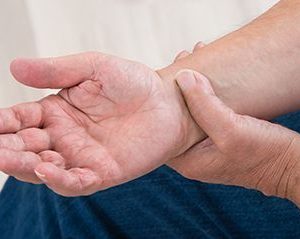- Skip Storing This Everyday Product in the Fridge Door
- Green Tea + B3 Pairing May Boost Brain Health
- Navigating Your Midlife Crisis: Embracing New Possibilities
- City Raccoons Showing Signs of Domestication
- Mapping the Exposome: Science Broadens Focus to Environmental Disease Triggers
- One Week Less on Social Media Linked to Better Mental Health
- Your Brain Changes in Stages as You Age, Study Finds
- Some Suicide Victims Show No Typical Warning Signs, Study Finds
- ByHeart Formula Faces Lawsuits After Babies Sickened With Botulism
- Switch to Vegan Diet Could Cut Your Greenhouse Gas Emissions in Half
Parkinson’s Disease: What Is It, and What Are the Early Signs?

A person seeing a barely noticeable tremor in one hand could be witnessing the first signs of Parkinson’s disease.
This progressive condition affects the nervous system, according to the Mayo Clinic in Rochester, Minn., which offers information about the disease.
While tremors are common, Parkinson’s can also cause stiffness or slow movement.
Medications can significantly improve a person’s symptoms. While the disease can’t be cured, surgery may help regulate certain regions of the brain and improve symptoms.
In early stages, a person’s face may show little or no expression. Arms may not swing when someone walks. Speech may become soft or slurred. Symptoms can worsen as the condition progresses.
They often begin on one side of the body. Typically, they are worse on that side, even after the condition begins affecting limbs on both sides.
The Mayo Clinic offers additional information on the classic symptoms.
Tremor, or rhythmic shaking, typically begins in the hand or fingers. A person may rub their thumb and forefinger back and forth. This is known as a pill-rolling tremor.
The hand may also tremble when it’s at rest, but that may decrease when a person is doing tasks.
Another common symptom is slowed movement, also called bradykinesia. This is seen when simple tasks become more difficult: Steps may be shorter, it’s difficult to get out of a chair, or there’s dragging or shuffling feet when walking.
Muscle stiffness can occur in any part of the body, may limit range of motion and can be painful.
Posture may become stooped, and a person with Parkinson’s disease may fall or have balance problems.
It may become more difficult to blink, smile or swing arms.
Speech can also change, becoming softer, quicker, slurred or hesitant. A monotone may develop, according to the Mayo Clinic.
Handwriting may appear smaller and it can become harder to write.
It’s important to see a doctor if you or a loved one has any of those symptoms to get a diagnosis or rule out other causes, the Mayo Clinic urges.
More information
The U.S. National Institute on Aging has more on Parkinson’s disease.
SOURCE: Mayo Clinic
Source: HealthDay
Copyright © 2025 HealthDay. All rights reserved.










